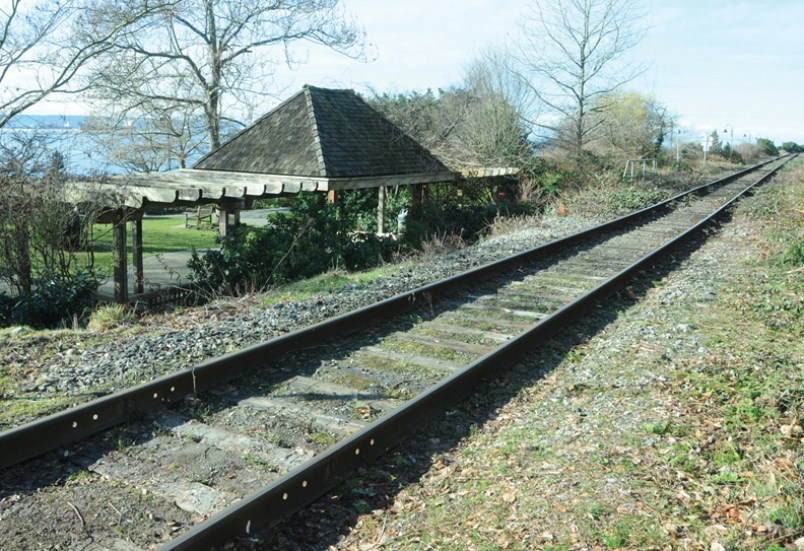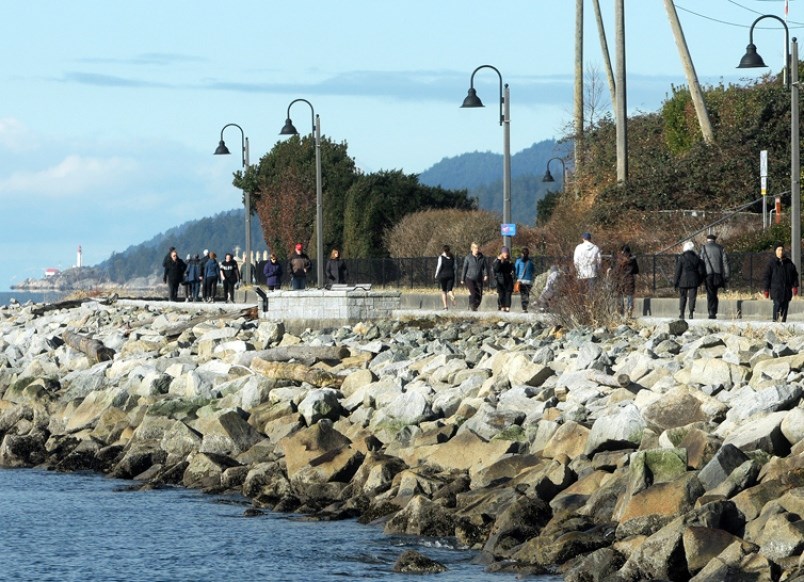The District of West Vancouver is fighting back against a lawsuit that would kick residents off the local Seawalk – unless the municipality agrees to pay potentially millions of dollars a year in rent to CN Rail.
The dust-up between the municipality – which built and maintains West Vancouver’s waterfront Seawalk – and CN, which holds a lease on the land over which part of the Seawalk is built – recently erupted after talks about a new lease agreement broke down.
On Feb. 17, CN Acquisition, an arm of the railway company, filed a lawsuit in B.C. Supreme Court against the municipality, stating that the rail company had cancelled the district’s lease. The suit asks for an injunction preventing the District of West Vancouver from trespassing on the land.
The lawsuit also seeks damages for the district’s use of the land and for overdue rental payments.

The municipality has fired back with an application filed with the Canadian Transportation Agency, a quasi-judicial federal agency that oversees railway operations. In that, the district has asked for an order allowing the municipality continued use of the Seawalk over the CN right-of-way, “which has been used by the residents of West Vancouver for the past 50 years” and which “forms an integral part of the system of pedestrian walkways in place in West Vancouver.”
According to the application, after both a lease and rental payments lapsed for about two decades, the two parties had recently been discussing a new lease arrangement. But the municipality balked after CN asked for a multimillion-dollar payment.
“CN has made it clear that it considers itself entitled to market rents for the land,” the district wrote, “and has proposed an annual rent of $3.7 million.”
The district, which has a population of about 42,000, said in the application CN’s proposed rent appears to be based on the value of nearby waterfront residential properties, which “happen to be among the most expensive real estate in Canada.”
West Vancouver countered with a proposal to pay $12,500 a year to CN.
The fate of the popular jogging and walking path along the shore of Burrard Inlet now appears to lie in the hands of lawyers.
According to background information included in the municipality’s federal application, the railway through West Vancouver dates back over a century to construction under the Pacific Great Eastern railway company in 1913. At the time, West Vancouver adopted bylaws allowing the rail corridor to operate over the land on the condition that it provide public crossings.
PGE was later taken over by the provincial government. Between 1928 and 1956, the train stopped operating through West Vancouver, and tracks between 24th Street and 28th Street were removed. It later reopened when the rail line was continued through to Squamish, with railway service operating as BC Rail.
In 2004, CN took over operations of BC Rail and acquired a 60-year renewable lease over the railway corridor, including the 1,100-metre section containing West Vancouver’s Centennial Seawalk.
After the municipality and CN got into a dispute about terms of the lease, West Vancouver stopped making payments to the railway company in 1994. In November 2015, the two sides began talking again, according to the district’s application, but remained far apart on the amount of money the municipality should pay.
In its application, the District of West Vancouver argues that the Seawalk provides “safe regulated access to the shoreline, protecting the railway from what would otherwise likely be a trespassing problem.”
It also argues the municipality has paid for storm damage, including placement of foreshore rip rap, at no cost to CN.
The municipality also argues that under CN’s lease from the province, the company is restricted from using the land for anything other than operating a railway, so is not in a position to benefit as a land developer.
The municipality should be allowed to continue to occupy the Seawalk, considering the long history of co-existence, past railway operators’ consent and CN’s own lengthy delay in pursuing the issue, the district said in its application.
For news about the North Shore go to nsnews.com



